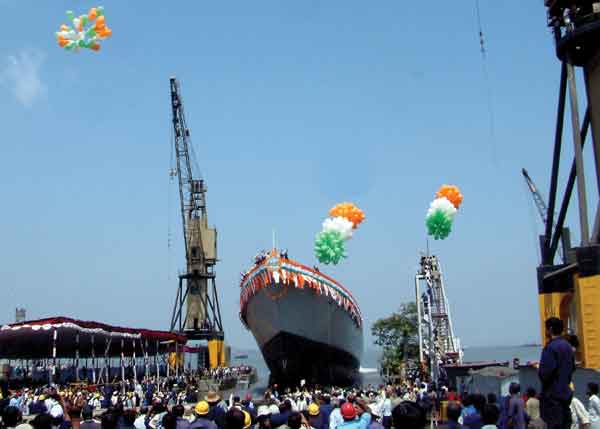In recent years, two developments have overlapped. India has become a cost-effective manufacturing location at a time when India’s Army, Navy and Air Force are poised to commence their modernisation and transformation for future warfare. This overlap and the daunting cost of future combat systems make it timely to address the “life cycle” aspects of the defence acquisition process in general and warships in particular.
Our own experience, as well as other studies, have shown that most costs are expended during the “operations and support” phase of an operating system.
The Life Cycle Costing Dilemma
When negotiating for a system, which is better – The Most Economical Bid or Total Ownership Cost? The most economical bid is usually easier to calculate but is it a true representation of what it is likely to cost to operate a system over its expected life? Our own experience, as well as other studies, have shown that most costs are expended during the “operations and support” phase of an operating system.
The Life Cycle Management Dilemma
Effective life cycle management demands assurances that the pipeline is maintained of spares and equipment necessary to support a defence system throughout its intended operating life. No nation wants to be “held hostage” by any original equipment manufacturer (OEM) or other nation during the life cycle support phase. There are three facets of this dilemma. Firstly, sanctions like those imposed in 1998 after our nuclear tests. Secondly, collapse of the supply line like when the Soviet Union dissolved. And thirdly, how does one assess the cost of such assurance that the vendor will inevitably pass on to the customer?
Affordability and Self-Reliance
In earlier years, competing goals used to make decision-making and total life cycle management somewhat difficult. It need no longer be so:
No nation wants to be “held hostage” by any original equipment manufacturer (OEM) or other nation during the life cycle support phase.
- The Goal of Self-Reliance. Earlier, the question used to be whether we should create and prop up our own defence industry despite the fact that more readily available, less expensive and/or better defence products were available from elsewhere Greater self-reliance is now well within reach if we can synergise “joint ventures” and “offsets” with our “cost advantage”
- Affordability. It has not been the practice for an Army, Navy and Air Force Staff Requirement to stipulate either the cost of acquisition or the cost of life cycle management. However, the daunting costs of future systems like “network centric capability” make it timely for Service Headquarters to consider involvement in such complex cost estimates.
- The highlighting of risk is particularly crucial in full developmental programmes like tanks, aircraft ships and submarines – the Main Battle Tank and the Light Combat Aircraft are case in point. ‘Affordability’ has to be balanced with stated capabilities and the cost of options for meeting those capabilities. The objectives must be described in terms of capabilities that will result in the best value for money. This must drive the conceptual change from ‘Staff Requirements’ to ‘Staff Desirements’ that was discussed in the July-September issue of the Indian Defence Review.
- Joint Ventures. As Brahmos has shown, there is great strength in cooperative efforts in research and technology development and production efforts. On the other hand, as the Trishul SAM Project has shown, developing national level niche capabilities requires time and funding – both of which carry an element of risk and over-runs.
- Offsets. An offset clause has been introduced for all contracts above Rs 300 crores. Transfer of technology for maintenance infrastructure to an Indian public or private firm will be applicable where equipment is bought from foreign vendors. In connection with offsets in defence deals, a recent media report stated, “Under the new arms acquisition guidelines, all defence deals worth over $ 70 million will be used as offsets. This requires foreign vendors to buy defence or procure other specified equipment locally from Indian suppliers.”
- With this offset policy in place and foreign corporations vying to co-produce defence equipment in India, the Ministry of Defence should take the initiative to become the “facilitator” for DRDO and public and private sector Defence Industry to join hands and leverage foreign collaborators to transfer the technologies that can help make the joint venture an export hub for the region. This phenomenon has already happened in the automobile sector – reputed companies like America’s Ford, Japan’s Toyota, Germany’s Mercedes and France’s Renault have set up production facilities in India.
‘Affordability’ has to be balanced with stated capabilities and the cost of options for meeting those capabilities.
Competitive Consortia for Warship Production & Warship Export
At present, warships are inducted from two sources. Those designed in-house in Naval Headquarters are built by Government shipyards. When force levels fall, warships are imported.
The per-unit cost of a warship increases remorselessly year after year. The primary causes are the long (ten-year +) gestation period between design and delivery, the changes in choice of equipment during the long gestation period and the high cost of systems having the latest technology. Over time, high unit cost limits the number of ships that can be acquired.
With the production of defence equipment opening up to the ‘private sector’, innovative frameworks like “Competitive Consortia” can now help develop competition within the parameters of the prevailing regulatory policies.
The framework suggested below is in the domain of warship building. It is adaptable for major Army and Air Force projects.
There should be at least two consortia to compete for the construction of a series of the Navy’s warships. Each consortium should comprise of:
- A ‘Defence Ministry Shipyard’,
- ‘Public and Private Sector OEM/Suppliers’
- A Joint Venture Foreign Collaborator and
- ‘Banks & Financial Institutions’
For example, Consortium A, could consist of Mazagon Docks, which collaborates with OEM and Turnkey Contractors within the public sector (for example BHEL and Bharat Electronics) and private sector (for example Kirloskar), a foreign collaborator (for example an Israeli Combat Systems Supplier) and a consortium of Banks and Financial Institutions who would fund the construction through a Structured Finance mechanism such as a combination of Long-term Finance against Secured Notes. More radical financing structures could, in the future, envisage ‘securitisation’ or bonds floated to long term Institutional Investors and/or the Public.
With the production of defence equipment opening up to the ‘private sector’, innovative frameworks like “Competitive Consortia” can now help develop competition within the parameters of the prevailing regulatory policies.
Consortium A would compete with Consortium B, comprising for example of Garden Reach or Goa Shipyard, another Financial Consortium, private and public sector firms and a Russian Combat Systems Supplier.
Indeed, this approach is equally applicable to Hindustan Shipyard and Cochin Shipyard, since both are owned by the Government’s Ministry of Shipping and Transport. Hindustan Shipyard has in the past built warships for the Navy and Cochin Shipyard is presently constructing the indigenous aircraft carrier.
A ‘competitive consortia’ approach will only work if the shipyards, industry, financial institutions and the joint ventures are ‘assured’ of profitable long-term participation. Long-term participation will derive from economies of scale, which in turn would derive from exports. This will provide the incentive for the participants to:
- Invest in Long-term Warship Research & Development
- Identify the Specific Joint Ventures with International Companies that will help make Consortia more Competitive for Future Orders.
- Undertake Life Cycle Costing and Life Cycle Management
By going beyond the present “buyer-vendor” relationship between the Navy and a Defence Shipyard, the competitive consortia approach permits the attainment of several desirable objectives:
- It makes it profitable for public and private sector Indian Defence Industry and Indian Financial Institutions to participate in warship building.
- It involves “profit driven” Indian institutions to help move warship production towards an environment wherein the primary determinant for selecting a consortium will be its competitive cost and not, as at present, the position of the shipyard’s order book and keeping shipyard workforce gainfully employed.
- It enables naval ship designers to interact with competing consortia to evolve futuristic designs on the basis of what is achievable indigenously.
- Since Defence shipyards are Government owned, the suggested approach falls within the ambit of current Industrial Policy, while at the same time moving towards a public-private partnership in the hi-tech warship building field through private sector industry participation, and at the same time adopting the best foreign technology available
- Over 40 years, the Navy has developed unique expertise in electrically and electronically integrating warship equipment, regardless of its origin – be it Russian, European or indigenous. Secondly, the Navy has acquired invaluable experience of building warships for the tropical conditions typical of the northern Indian Ocean (high temperatures, high humidity and warm, highly saline, highly corrosive seas). These conditions are totally different from those for which European and American shipyards build their navy’s ships. The successful operation of Indian built warships in tropical conditions makes them uniquely suitable for export to countries in the Indian Ocean. This particular aspect will make joint venture collaboration even more attractive to the foreign partner, allowing a beneficial two-way technology transfer.






FUTURE IS THE DAY FOR SUBMARINES
Dear Sir,
As we know the surface vesicles are more likely targets with the satellite controlled missiles and aircraft. The future of the modern warfare will be linked to submarines.
It will be equally good to have our nuclear submarine production accelerated and we must come to such a level that we can even export these submarines.
with regards
MOHAN JANGA
Ships are difficult to finance, because not many are made at a time. If an assembly line could make many identical parts for the ship, then the cost decreases substantially, or very greatly. The hull of the ship, is perhaps modular today, and modular constructions are supposed to be very cost effective. The fact seems to be, building one huge ship, say an aircraft carrier, is hugely expensive, and will always be. The steel of the ship, seems to need to be stealthy, and of a particular grade. Why would frigates and destroyers be needed? To engage surface warships, and to be able to sink enemy vessels, generally. It is extremely difficult, for a submarine to engage ships in a number, perhaps, with torpedoes. Under sea missiles will make the submarine impervious to her own invisibility.
An idea is, to make the most relevant warships, and follow up by making the same after the production has ended, over a period. Then, the shipyards must be given commission to maintain, upkeep and repair, the warships for the lifetime.